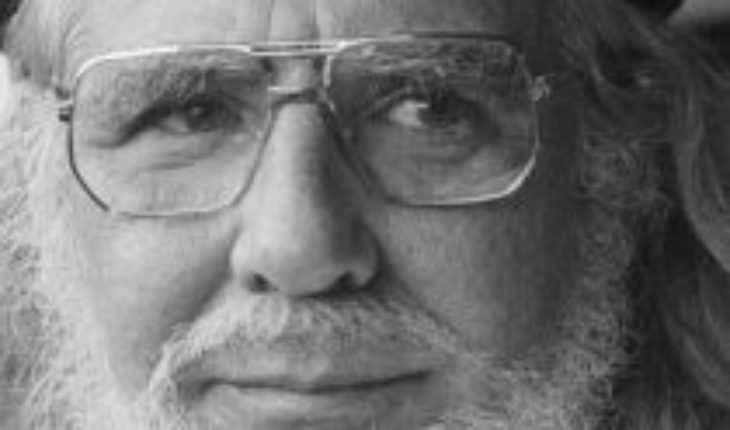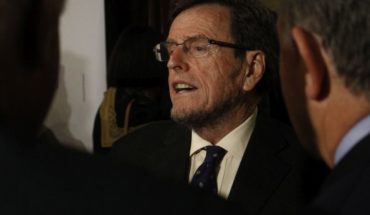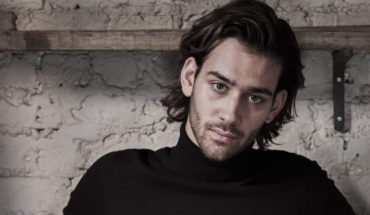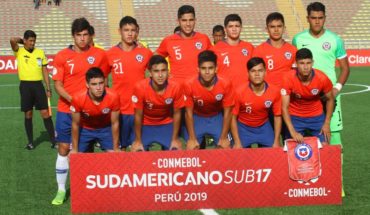
In the image he is seen with his unmistakable white beard and cotona, kneeling before Pope John Paul II and sketching a slight smile, his eternal black beret humbly resting on one of his knees.
The Pope, with an affront gesture and an accusing finger, publicly admonishes him to his colleagues in the government of Nicaragua, who gathered on March 4, 1983 at Managua Airport to receive the pontiff.
“You must regularize your situation”, was the public scolding of John Paul II during his first visit to Central American lands.
The famous photo of John Paul II scolding Ernesto Cardenal”Since I did not answer anything, he repeated the abrupt admonition. Meanwhile, they focused all the cameras in the world,” the poet and priest would then count in his autobiography.
The scene was the most public manifestation of the conflict between Cardinal and the Catholic hierarchy because of his commitment to the Sandinista revolution (1979-1990), during which he served as Minister of Culture.
Cardinal: “The Pope disrespected the people”
As one of the most recognized exponents of liberation theology, the author of The Gospel of Solentiname he was a prominent figure in the fierce battle between the movement and John Paul II, who forbade priests from exercising government positions.
A few months later, the Polish pope ordered the suspension of Cardinal’s divinis, which prevented him from exercising the priesthood for nearly 35 years, until his revocation, in February 2019, by Pope Francis.
The poet spent more than three decades unable to exercise priestly labor, until he was pardoning for the Vatican in February 2019The news of this revocation came to him while he was convalescing in a hospital in Managua, increasingly distant from the Sandinista party and its leader , Daniel Ortega, the man in glasses dressed as a military man who appears next to John Paul II in the famous photograph.
Daniel Ortega, the revolutionary who liberated Nicaragua and who is accused of becoming the tyrant who helped overthrow
Cardinal received the news as he had lived: with the serenity of being faithful to the values that led him to renounce the privileges guaranteed by his cradle to embrace the priesthood, the revolutionary cause, and poetry.
“My poetry has a social and political commitment, rather revolutionary. I have been a poet, priest and revolutionary,” defined in 2012, being recognized with the Ibero-American Prize for Poetry Reina Sofía.
Why Nicaraguans are convinced that theirs is the country with the most poets per capita in Latin America
Two vocations
Born on January 20, 1925 in Granada, in the rank of “one of the most respectable families in the country”, the future priest grew up in one of the most emblematic houses of the conservative capital of Nicaragua.
“It wasn’t a palace, but it was the second most elegant building in Granada,” is the description of “The House of Lions” he makes in his autobiography.
“The first was my grandfather’s house, in front of the central square, next to the cathedral,” the poet, who describes that grandfather as a simple “rich trader,” points out.
At the time of the poet’s birth, the Cardinals were one of the families with the most money and abolengo of NicaraguaFor him the Cardinal Martinez family had chosen the law degree.
But his father eventually surrendered to the boy’s obvious literary vocation and allowed him to study literature in Mexico and the US.
Another equally or stronger vocation, however, would lead him to enter the Trappist monastery of Gethsemani in Kentucky, USA, spurred by the end of one of those “many infatuations” that inspired his famous Epigrams.
“I wasn’t going to satiate with anyone, just God — which God knew, but I didn’t know,” he says in the first volume of his memoirs, Lost life, about the tension between romantic love and religious vocation that haunted him during the first part of his life.
Shortly after arriving at the monastery he described the day to his parents and brothers: “You cannot imagine that happier journey! Make exactly a wedding trip.”
Cardinal decided for a religious life in 1957In Gethsemani, the Nicaraguan poet would also know the greatest political and religious influence of his life.
“He will have from a novice teacher to one who is also a poet, in a sense, and studied like you at Columbia University,” he had already been anticipated in his letter of admission, without directly naming the American writer and mystic Thomas Merton.
“I had read virtually all of his books, and even translated,” Cardinal says, then emphasized that Merton had only been named a novice teacher about a year before his arrival.
“And I attributed that to a special action of God to me,” he says of the man who placed him on the path of a politically committed Christianity and also inspired the founding, several years later, of the Community of Our Lady of Solentiname, in the archipelago Nicaraguan of the same name.
Simple and straightforward
Cardinal’s passage through the Order of the Trap also helped him develop his unmistakable literary style, which by then already included the epic poem Time 0, which left no doubt about his aversion to Latin American right-wing dictatorships, and especially to that of his native Nicaragua, that of the Somoza.
“Even if I’m not writing poetry, manual labor, which includes cleaning toilets, is a style practice, because the humility and simplicity of these works will surely perfect my literary style, giving me more simplicity, clarity, direct expression”, Wrote.
This style would also be the mark of the community of primitivist artists of Solentiname, founded by Cardenal in 1966, a year after his ordering as a priest, which quickly became a sanctuary for the guerrillas of the Sandinista Front who they were fighting the sober dynasty.
Cardinal also dabbled in sculpture. And this silhouette of Sandino, which dominates Managua, is his work.” At first he had told the guerrilla leaders that he was in line with his goals but not with his methods, but in the face of Somoza’s dictatorship, the only possible way was armed struggle,” Cardinal told BBC Mundo in 2007.
From archive: Ernesto Cardenal, the revolutionary holy poet
After the triumph of the revolution in July 1979, Cardinal tried to replicate what had been done in Solentiname at the national level with initiatives such as the “Popular Poetry Workshops”, inspired by the experience of the archipelago.
“We have done in Nicaragua something that had never been done in the world: that workers, Indians, peasants, domestic workers, soldiers, policemen would make poetry and good modern poetry,” presumed in 1983, the same year that John Paul II forbade priests Nicaraguans – including his brother Ferdinand, Jesuit priest and minister of education – exercise government positions.
Four images defining John Paul II’s intense relationship with Latin America
But none of the Cardinal brothers obeyed the papal order. The poet remained at the helm of the Ministry of Culture until 1987 and his brother Fernando was in charge of Education until 1990. He died in Managua in 2016.
“Christianity as we see it in the Vatican, it is not the one Christ wanted for the church; but my faith is in Christ, not in the Vatican; if the Vatican departs from Christ, I am still with Christ,” Mundo Ernesto Cardenal told BBC in 2007, 20 years after the Vatican ban.
Cardinal never ceased to be considered a man leftThen, the sculptor had already strayed from the Sandinista Front, which he publicly resigned in 1994 to become a fierce critic of Ortega.
His prestige and international credibility, especially among left-wing movements, made him the subject of what Cardenal denounced as a “political persecution” of the Sandinista leader who returned to the presidency of Nicaragua in 2007.
Thus, after a judicial process for which he had already been acquittttttous in 2005, in February 2017 the poet was ordered to pay US$800,000 for “damages” to a former collaborator of his Sonamelenti project, close to the Ortega government, who sued him for his claim for breach of contract.
From the archive: Cardinal to jail?
At that time, the Nicaraguan authorities also ordered the freezing of the priest’s accounts, by then 92 years old.
For Cardinal, Ortega ended up becoming a dictatorJudicial harassment, however, failed to silence Cardinal, who also made himself heard during the protests of April 2018 for which he is accused of crimes against humanity of the Ortega government.
“The state of Nicaragua has engaged in conduct that should be considered crimes against humanity”
“Now suddenly across the country have sprung up in protests, taking to the streets. Something that was not expected because the youth seemed asleep, or that a sepulchral slab had fallen upon it. My brother (Fernando) will have seen it now since eternity. Nicaragua everywhere has been resurrected,” he celebrated at the time.
“For many years I had been having a prayer taken from one of the ‘Psalms’: Lord, make us become what we were again. And I’ve been heard!” he said in an interview with the German agency DPA.
In December of the same year he dedicated the newly received Mario Benedetti International Prize to Alvaro Conrado, a 15-year-old boy killed in the protests.
Shortly thereafter he was admitted to a hospital in Managua because of an infection.
It was there that on February 17, 2019, already fully readmitted to the priesthood, he finally again delivered Mass, assisted by the papal nuncio in Nicaragua who communicated to him the Vatican’s pardon.
A forgiveness that allowed him to die as he always wanted to be: poet, priest, and revolutionary.





